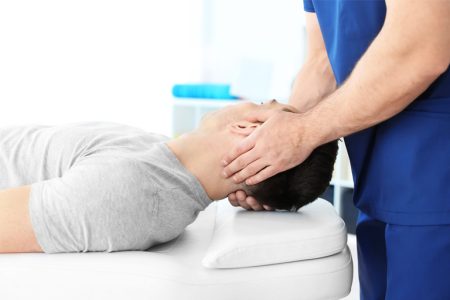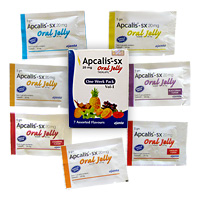Stroke Rehabilitation in Singapore: A Path to Recovery and Independence

Introduction: Understanding Stroke and Its Impact
A stroke is a sudden, life-changing event that can leave a person with lasting physical, emotional, and cognitive challenges. It occurs when the blood supply to part of the brain is interrupted, causing brain cells to die due to lack of oxygen. In Singapore, stroke is one of the leading causes of long-term disability and a major public health concern. The road to recovery can be complex, but with proper care, guidance, and support, many stroke survivors can regain their independence and quality of life. The stroke rehabilitation in singapore offers a multidisciplinary approach aimed at helping patients restore movement, improve function, and adapt to a new way of living.
The Importance of Stroke Rehabilitation
Stroke rehabilitation is a critical part of recovery. The earlier it begins, the better the chances for regaining lost abilities. Rehabilitation doesn’t reverse the brain damage caused by a stroke, but it helps individuals relearn skills that were affected and teaches new ways to perform daily tasks. In Singapore, stroke rehabilitation programs are structured to address a wide range of impairments including mobility issues, speech difficulties, memory loss, swallowing problems, and emotional instability. The goal is to enhance the patient’s ability to function independently and reduce the risk of future strokes or complications.
Stroke Rehabilitation Services in Singapore
Singapore offers a comprehensive network of stroke rehabilitation services delivered through hospitals, community care providers, private clinics, and specialized rehabilitation centers. These services are often provided by an interdisciplinary team that may include physiotherapists, occupational therapists, speech-language therapists, medical social workers, nurses, and neurologists.
Inpatient Rehabilitation
After the acute phase of a stroke, many patients are transferred to inpatient rehabilitation units where they receive intensive therapy. Institutions like Tan Tock Seng Hospital, Singapore General Hospital, and the National Neuroscience Institute offer specialized stroke rehab programs that focus on early mobilization, physical reconditioning, and emotional support.
Outpatient Rehabilitation
For patients who are stable enough to go home but still require therapy, outpatient rehabilitation offers scheduled appointments at hospitals or clinics. This option allows patients to continue their recovery while remaining in a familiar environment.
Community-Based Rehabilitation
Community hospitals like Ang Mo Kio-Thye Hua Kwan and St. Andrew’s Community Hospital play a crucial role in stroke recovery by offering affordable, accessible rehab services. These centers provide tailored programs, including home visits and caregiver training, to help patients transition smoothly from hospital to home.
Home-Based Rehabilitation
Some stroke survivors may benefit from home rehabilitation, especially if mobility is severely restricted. In Singapore, home therapy services are available through agencies such as the Home Nursing Foundation and Touch Community Services. Therapists visit the patient’s home to provide physiotherapy, occupational therapy, and speech therapy, reducing the need for travel and supporting recovery in a familiar setting.
Types of Stroke Rehabilitation Therapies
Stroke rehabilitation is multifaceted and focuses on physical, cognitive, and emotional recovery. Different therapies are combined to meet the specific needs of each individual.
Physiotherapy
Physiotherapy focuses on improving strength, balance, coordination, and mobility. After a stroke, one side of the body may become weak or paralyzed, making movement difficult. Physiotherapists help retrain motor functions through exercises, gait training, and balance work. Tools like treadmills, walkers, and functional electrical stimulation may be used to support recovery.
Occupational Therapy
Occupational therapy helps stroke survivors regain the ability to perform daily tasks such as dressing, bathing, eating, and using the toilet. Occupational therapists teach adaptive strategies and recommend assistive devices that promote independence and safety in the home environment.
Speech and Language Therapy
Many stroke survivors experience communication and swallowing difficulties. Speech-language therapists work on speech clarity, language comprehension, and expression. They also help patients who have dysphagia, a swallowing disorder, to eat safely without choking or aspiration.
Cognitive Rehabilitation
Cognitive therapy addresses issues such as memory loss, poor attention span, problem-solving difficulties, and impaired judgment. Therapists use exercises and strategies to stimulate brain function and improve cognitive abilities. Digital tools and apps are increasingly used to engage patients in mental training.
Psychological and Emotional Support
Emotional recovery is just as important as physical healing. Stroke survivors often struggle with depression, anxiety, and frustration. Psychological counseling and support groups provide a safe space to express emotions, develop coping skills, and connect with others on a similar journey. Family involvement is encouraged to foster emotional resilience and understanding.
The Role of Caregivers in Stroke Recovery
Caregivers play a vital role in stroke rehabilitation. In Singapore, many stroke survivors depend on family members or domestic helpers for daily support. Caregivers assist with medication, mobility, hygiene, and emotional encouragement. As caregiving can be physically and emotionally demanding, Singapore offers caregiver training programs and respite care services to ensure they are equipped and supported in their role.
Organizations like the Agency for Integrated Care (AIC) offer resources, workshops, and financial assistance schemes such as the Caregivers Training Grant. These initiatives are designed to reduce caregiver stress and promote sustainable long-term care at home.
Stroke Rehabilitation Technologies in Singapore
Singapore is at the forefront of integrating technology into healthcare. Stroke rehabilitation has benefited from these advancements, with several hospitals and clinics adopting innovative solutions to enhance recovery outcomes.
Robotics and Exoskeletons
Robotic-assisted therapy helps patients perform repetitive movements that stimulate brain recovery. Devices like robotic arms and leg exoskeletons are used to improve strength and coordination, especially in patients with severe motor impairment.
Virtual Reality (VR)
VR-based rehab systems create interactive environments that motivate patients to complete exercises while receiving real-time feedback. This approach makes therapy more engaging and effective, particularly for younger stroke survivors.
Tele-rehabilitation
With the rise of telehealth, stroke patients in Singapore can now receive rehabilitation services remotely. Virtual consultations, exercise programs, and progress tracking tools make it easier for patients in remote areas or with limited mobility to access care.
Financial Assistance for Stroke Rehabilitation in Singapore
Stroke rehabilitation can be costly, especially for long-term recovery. Fortunately, several financial assistance schemes are available in Singapore to ease the burden on patients and families.
MediSave
Singaporeans can use MediSave to pay for inpatient and outpatient rehabilitation services, including physiotherapy, speech therapy, and occupational therapy.
MediShield Life
This basic health insurance plan covers large hospital bills and certain outpatient treatments, including post-stroke rehabilitation.
Community Health Assist Scheme (CHAS)
Patients who qualify under CHAS can receive subsidies for medical services at participating private clinics, including physiotherapy and general consultations.
Seniors’ Mobility and Enabling Fund (SMF)
This fund helps elderly stroke survivors access assistive devices and home healthcare items such as wheelchairs, hospital beds, and commodes.
Home Caregiving Grant (HCG)
This monthly cash payout supports caregivers looking after severely disabled family members, including those who have suffered a stroke.
Choosing the Right Stroke Rehabilitation Program
Every stroke survivor’s needs are unique. Choosing the right rehabilitation path requires consideration of several factors such as:
-
Severity and type of stroke
-
Patient’s age, motivation, and pre-stroke health status
-
Availability of caregivers and support system
-
Financial resources and accessibility to rehab centers
-
Medical advice from the primary physician or neurologist
In Singapore, patients and families are encouraged to discuss these factors with healthcare professionals to develop a realistic and effective rehab plan. Multidisciplinary stroke teams often conduct family conferences to align goals and expectations.
Recovery Timeline and Expectations
Stroke recovery varies from person to person. Some individuals show rapid improvement in the first few weeks, while others may need months or even years of rehabilitation. In general, the most significant recovery tends to occur in the first six months after the stroke, but continued gains are possible with consistent effort.
The key to successful recovery is persistence, family support, and a structured rehabilitation program. Patients are advised to remain committed to their therapy schedules, maintain a healthy lifestyle, and celebrate small victories along the way.
Community Support and Resources
Stroke recovery doesn’t end with therapy sessions. Support groups and community organizations in Singapore play a crucial role in helping stroke survivors reintegrate into society.
Singapore National Stroke Association (SNSA)
SNSA offers support programs, education, and advocacy for stroke survivors and caregivers. They host monthly meet-ups, workshops, and wellness activities that promote mental and physical well-being.
Stroke Support Station (S3)
This non-profit organization provides day rehabilitation services, caregiver support, and wellness programs. S3 aims to enhance the quality of life for stroke survivors through active engagement and social connection.
Community Clubs and Senior Activity Centres
Many community clubs and eldercare centers run stroke-specific activities, such as chair yoga, art therapy, and memory games, to keep survivors mentally and physically engaged.
Conclusion: Hope, Healing, and Possibility
Stroke rehabilitation in Singapore is a well-structured, holistic process that focuses on helping individuals regain control over their lives. With a strong healthcare infrastructure, cutting-edge technology, and a wide network of community support, Singapore offers one of the most comprehensive stroke recovery ecosystems in Asia.
Recovery from a stroke is not just about regaining lost abilities—it’s about discovering new strength, building resilience, and fostering independence. With the right care team, committed caregivers, and access to professional rehabilitation services, stroke survivors in Singapore can look forward to a fulfilling life beyond stroke.



